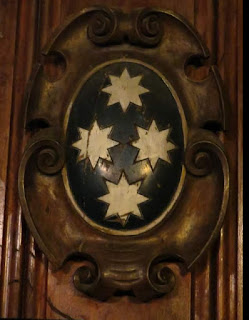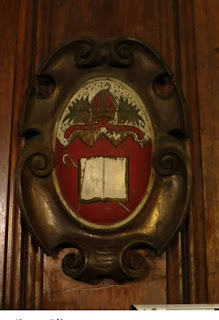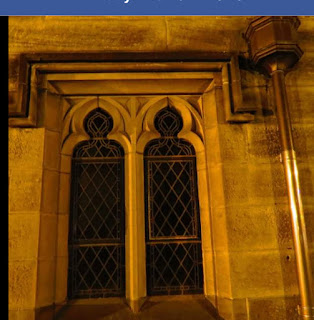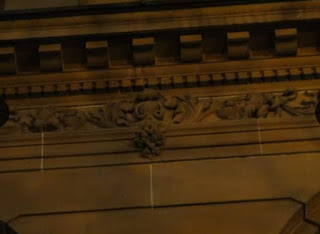Search This Blog
Friday, April 23, 2021
Thursday, April 1, 2021
Proclamation - Sir Richard Bourke - King William IV Death - Queen Victoria As Soverign 27th October 1837
Proclamation - Sir Richard Bourke - King Willian IV Death - Queen Victoria As Sovereign
27th October 1837
PROCLAMATION
"Where it has pleased Almighty God to call to his mercy our Late Soverign Lord King William The Fourth; of Blessed & Glorious memory; By whose decease the Imperial Crown Of The United Kingdom Of Great Britain & Ireland, & all other dominions; is solely & rightfully come to the High & Mighty Princess Alexandrina Victoria; saving the rights of any issue of His Late Majesty King William IV, which may be born of his Late Majesty's Consort:
"We, the Captain-General & Governor-in-Chief Of The Territory of New South Wales & it's Dependancies, The Chief Justice, The Members Of The Executive Council, The Puisne Judges Of The Supreme Court, the Members of The Legislative Council, The Clergy, Magistrates, Civil Officers of The Government, & The Naval & Military Officers of Her Majesty's Service, with numbers of other principal Inhabitants of The Colony,
"Do now hereby, with one full voice & consent of tongue & heart, Publish & Proclaim that The High & Mighty Princess Alexandrina Victoria, is now, by The Death of our late Soverign; of happy & Glorious memory, become our only lawful & rightful Liege Lady Victoria, by the Grace Of God, Queen of The United Kingdom of Great Britain & Ireland, Defender of the Faith, saving as aforesaid, Supreme Lady Of The Territory of New South Wales & its Dependancies, To Whom, saving as aforesaid, We Do Acknowledge all Faith & Constant Obedience, with all hearty & humble affection, beseeching God, by Whom Kings & Queens do Reign, to bless the Royal Princess Victoria with long and happy years Reign over us
Given At Government House, Sydney, this twenty seventh day Of October 1837
God Save The Queen
(Signed) Richard Bourke
Governor In Chief
Saturday, March 20, 2021
Christ Church - St Lawrence - Anglican Church - 814 George Street - Haymarket - Railway Square - NSW
Christ Church - St Lawrence - Anglican Church - 814 George Street - Haymarket - Railway Square - NSW
Wedding Cake Island - Sydney Harbour - Port Jackson - New South Wales
Wedding Cake Island - Sydney Harbour - Port Jackson - New South Wales
Wedding Cake Island is a small rocky island located in the eastern part of Sydney Harbour, off the coast of Coogee Beach in New South Wales, Australia. Here's some information about Wedding Cake Island:
1. Name: Wedding Cake Island gets its name due to its distinctive shape, which is said to resemble a tiered wedding cake. The name is derived from its appearance when viewed from a distance, particularly from Coogee Beach or other vantage points along the coast.
2. Geological Formation: The island is a rocky outcrop that emerged due to geological processes over millions of years. It is composed of sandstone, which is a common rock type in the Sydney region.
3. Marine Life and Surrounding Area: The island is part of a marine reserve and is known for its diverse marine ecosystem. The surrounding waters are popular for snorkeling and diving due to the presence of coral reefs and a variety of fish and other marine creatures.
4. Access and Conservation: Wedding Cake Island is located offshore and can be seen from various coastal viewpoints. Access to the island itself is restricted to protect the local environment and wildlife. Visitors are not permitted to land on the island.
5. Importance to the Local Community: Wedding Cake Island is a significant landmark for the local community, particularly for residents and visitors of Coogee Beach. It adds to the natural beauty of the area and is often featured in photographs and artwork depicting the Sydney coastline.
6. Music Connection: Wedding Cake Island gained additional recognition through its association with the Australian rock band Midnight Oil. The band released a song titled "Wedding Cake Island" in 1979, which contributed to the island's cultural significance.
Wedding Cake Island is a distinctive geological feature and a notable landmark in Sydney Harbour. Its unique shape, marine biodiversity, and connection to the local community make it a memorable part of the coastal landscape.
Bare Island - Sydney Harbour - Port Jackson - New South Wales
Bare Island - Sydney Harbour - Port Jackson - New South Wales
Glebe Island - Sydney Harbour - Port Jackson - New South Wales
Snapper Island - Sydney Harbour - Port Jackson - New South Wales
Snapper Island - Sydney Harbour - Port Jackson - New South Wales
Snapper Island - Sydney Harbour - Port Jackson - New South Wales
Spectacle Island - Sydney Harbour - Port Jackson - New South Wales
Spectacle Island - Sydney Harbour - Port Jackson - New South Wales
Garden Island - Sydney Harbour - Port Jackson - New South Wales
Garden Island - Sydney Harbour - Port Jackson - New South Wales
Clark Island - Sydney Harbour - Port Jackson - New South Wales
Clark Island - Sydney Harbour - Port Jackson - New South Wales
Shark Island - Sydney Harbour - Port Jackson - New South Wales
Shark Island - Sydney Harbour - Port Jackson - New South Wales
Goat Island - Sydney Harbour - Port Jackson - New South Wales
Goat Island - Sydney Harbour - Port Jackson - New South Wales
Pinch Gut Island - Fort Denison - Sydney Harbour - Port Jackson - New South Wales
Pinch Gut Island - Fort Denison - Sydney Harbour - Port Jackson - New South Wales
Monday, March 15, 2021
Foundation Of Australia - Loftus Street, Eastern Side - Near Circular Quay
Foundation Of Australia
Loftus Street, Eastern Side, Near Circular Quay
On The 18th August 1786, Lord Sydney Wrote To The Lords Of The Treasury, Saying That It Was The Kings Pleasure That Ships Be Provided For The Carriage Of 750 Convicts To Botany Bay, Together With Provisions & Necessaries Useful On Arrival.
A Fleet Of 2 War Ships, 6 Transports, & 3 Supply Vessels, Commanded By Captain Arthur Phillip R.N. , Sailed From Portsmouth On The 12th May 1787 For The New Colony Of New South Wales.
Most Of The Fleet Dropped Anchor At Botany Bay On The 20th January 1788, After A Voyage Of 8 Months, In Which They’d Sailed 15,063 Miles.
On The 22nd January 1788 Captain Arthur Phillip Headed A Boat Party To A Harbour 9 Miles North Of Botany Bay, Which Captain Cook Had Sighted & Named Port Jackson In May 1770 As He Mapped The East Coast Of Australia (New Holland) With Sir Joseph Banks On The HMAS Endeavour, After The Planetary Conjunction Of Venus In Tahiti Upon King George III’s Instructions.
Captain Arthur Phillip Noted In The Official Journal That
“He Had The Satisfaction To Find One Of The Finest Harbours In The World, In Which A Thousand Sail Of The Line Might Ride In Perfect Security.”
“The Fleet Up Anchored Fro
The Fleet Up Anchored From Botany Bay And After A Few Hours Were Safely Anchored And Moored In Sydney Cove. Arthur Phillip Wrote - “
Fwwgeg
Subscribe to:
Comments (Atom)





















































